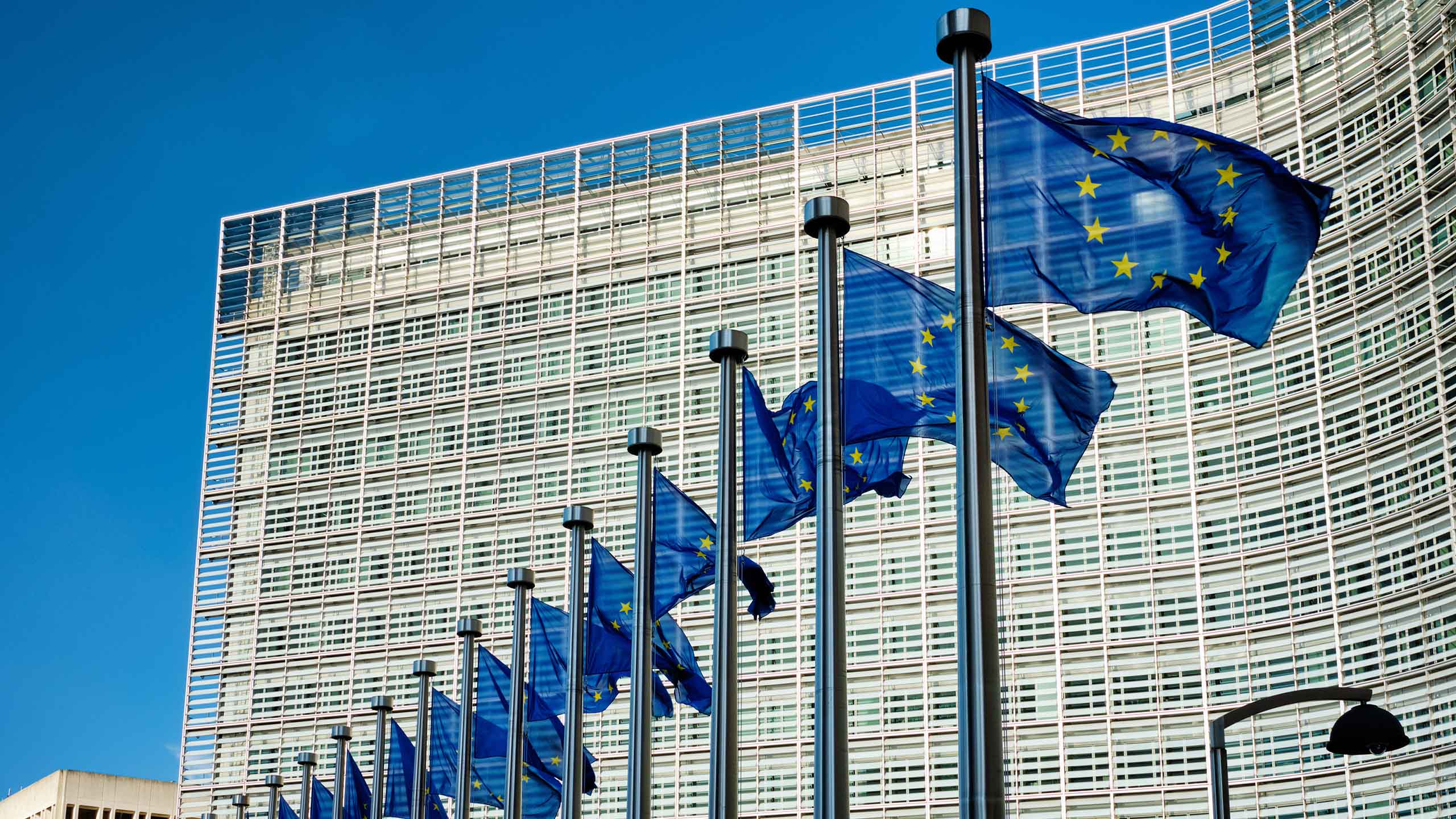The week that was …
Economic round-up
UK GDP
The UK economy grew by 0.5% in February, significantly ahead of the consensus forecast from economists of a 0.1% gain. January’s figure was also revised marginally higher. All three areas of the economy – services, production and construction – have grown over the past 12 months. Read more in ‘In focus’ below and from the Guardian here
US inflation
The latest CPI data showed US inflation cooled to 2.4% from 2.8% last month. Nevertheless, inflation expectations remain high amid expectations that Donald Trump’s tariff regime will lift prices. Read more from CNN here
China inflation
The March CPI reading for China showed deflationary pressures persist. Prices showed a 0.1% drop year on year – weaker than the consensus of economists’ expectations. Both food and non-food inflation slowed month-on-month. Read more from ING here
US consumer sentiment
US consumer sentiment dropped for the fourth consecutive month. The University of Michigan sentiment index fell from 57 in March to 50.8 in April – the lowest level since June 2022 and well below consensus forecasts of 54.5. Read more from Trading Economics here
Markets round-up
Tariff pause
Donald Trump deferred the imposition of global tariffs after a rebellion from the US bond market. As the US 10-year government bond yield started to tick higher, the US president suspended ‘reciprocal’ tariffs, leaving the overall 10% tariff and tariffs on China in place. Read more in ‘In focus’ below and from CBS here
‘Safe haven’ gold
The US dollar fell to a three-year low, while ‘safe haven’ gold ended the week at fresh highs in response to a trade war between the US and China. Read more from the Times here
Volatile markets
It was a wild week for financial markets, as tariffs were imposed by the US, then removed – and then reimposed for China. There is mounting evidence that economists, investors and consumers are all increasingly worried about the prospect of higher inflation and a recession. Read more from NBC here
“Foreign and domestic investors in US treasuries are reappraising the sustainability of the US fiscal position in light of plummeting growth projections, the expected tariff impact on US inflation and general uncertainty around policy.
Selected equity and bond markets: 04/04/25 to 11/04/25
| Market | 04/04/25 (Close) |
11/04/25 (Close) |
Gain/loss |
|---|---|---|---|
| FTSE All-Share | 4564 | 4304 | -0.9% |
| S&P500 | 5073 | 5363 | +5.7% |
| MSCI World | 3,326 | 3,471 | +4.4% |
| CNBC Magnificent Seven | 260 | 281 | +8.4% |
| US 10-year treasury (yield) | 4.24% | 4.49% | |
| UK 10-year gilt (yield) | 4.45% | 4.76% |
Investment round-up
Record UK outflows
Despite the UK market outperforming the global index, UK-focused funds suffered their worst-ever quarter for net flows as investors pulled £1.2bn in March, according to data from Calastone. Read more from Calastone here
Second term for FCA boss
Chancellor Rachel Reeves confirmed the reappointment of Nikhil Rathi as chief executive of the Financial Conduct Authority for a second five-year term – until September 2030.
Allianz names senior roles
Allianz Global Investors has announced Michael Krautzberger will become CIO Public Markets. He is currently Global CIO for Fixed Income. Michael Heldmann will become CIO Equity on 1 October 2025, succeeding Virginie Maisonneuve who will leave the firm in December 2025.
Gardhouse returns with wealth firm
Former Hargreaves Lansdown CIO Lee Gardhouse has launched a new wealth management firm called Moai Wealth. He will be joined by Jessica Miller, formerly head of product and proposition at Schroders Personal Wealth, and Adam Lambert, who was an investment quant analyst at Hargreaves Lansdown.
… and the week that will be
Meta antitrust case begins
Meta faces an antitrust challenge from the Federal Trade Commission, which could see it forced to sell off messaging platform WhatsApp and social media platform Instagram. Also representing a test of regulators’ inclination to challenge the might of big tech, it could prompt further selling pressure on mega cap technology shares. Read more from NPR here
China GDP
China’s upcoming GDP data will reveal the impact of recent stimulus packages. It should also reveal whether the country has sufficient firepower to hold its ground in its tariff stand-off with the US. A poll of economists by Reuters showed expectations the economy would slow as the impact of tariffs starts to bite. Read more from Reuters here
The week in numbers
UK employment data: Consensus expectations are for the February unemployment rate to fall to 4.3%, and average earnings to rise by 5.8% from 5.7%.
UK inflation (March): Prices are forecast to rise 3.2% year-on-year from 2.8%. Core consumer price index inflation is expected to rise 3.3% year on year from 3.5%.
ECB rate decision: Consensus expectations are for a 25-basis point cut, taking the Deposit Rate down to 2.25%.
China first-quarter GDP: Growth is expected to fall to 4.7% year on year, from 5.4%.
US retail sales (March): Sales are expected to edge up 0.1% month-on-month, having risen 0.2% in February.
Japan inflation (March): Prices are forecast to rise to 4.3% from 3.7% year-on-year, but core CPI is expected to slow to 2.5% from 3%.
Company news: Full-year earnings expected from Sainsbury’s.
In focus: Truss issues for US bonds?
“We are being treated by global financial markets like a problematic emerging market.”
Larry Summers, former US Treasury Secretary
Donald Trump is not the first global leader to have been bossed about by the bond markets but he may be the most important. After two shaky treasury auctions and a spike in yields, the US president moved to avoid his very own ‘Liz Truss moment’ with a partial roll-back of his tariff plan. Even so, yields moved even higher on Friday, suggesting he may need a more fundamental rethink.
In his first term, Trump’s priority appeared to be the stockmarket. This time round, his close advisers would seem to have persuaded him the bond market is a better marker of the success of his policies. As treasury secretary Scott Bessent said in an interview in February: “The president wants lower rates. He and I are focused on the 10-year treasury and what is the yield of that.”
That being so, Trump appears to have been willing to endure volatility in the equity market – but a wobbly $58bn (£44bn) bond auction was a catalyst for him to pause on the more extreme elements of his trade policy. The treasury market had already shown signs of unease, with yields initially falling in expectation of a recession, but then rising over fears the government did not have a good grip on the economy. The auction saw weak demand, prompting hedge funds to shift their positioning. The US treasury yield spiked to 4.3%.
And that is where it might have ended. Trump postponed the lion’s share of tariffs, while keeping the pressure on China, the stockmarket rallied and the bond yield dipped again. “The bond market right now is beautiful,” Trump said on Wednesday. Only, it didn’t last – by close of play on Friday, treasury yields were back up to almost 4.5%.
This is directly contrary to the normal pattern in markets, where a riskier environment creates more demand for the traditionally more ‘safe haven’ treasuries – not to mention dangerous territory for a country where interest payments are now around $1tn per year.
This is directly contrary to the normal pattern in markets – not to mention dangerous territory for a country where interest payments are now around $1tn per year.”
According to Gordon Shannon, co-head of investment grade at TwentyFour Asset Management, there are three main theories as to why the treasury market behaved as it did. The first is that volatility begets volatility – investors move positions around as relative value swings, with some selling government bonds to fund outflows and others to pay margin calls.
The second is that the treasury market experienced retaliatory selling from China. “It owns roughly $800bn of US treasuries according to the US Treasury Department,” Shannon points out. “Trump’s opponent in what is now a full-blown trade war has significant clout.”
The final theory is that global investors are retreating from US government risk. “Foreign and domestic investors in US treasuries are reappraising the sustainability of the US fiscal position in light of plummeting growth projections, the expected tariff impact on US inflation and general uncertainty around policy,” says Shannon – adding that, of the trio, he finds this third scenario the most plausible.
This view is echoed by other asset allocators, with Ian Rees, head of multi-manager at Premier Miton, noting that while a lower-than-expected inflation print would normally bring yields down on rate-cut expectations, bond markets last week remained impervious as inflation came in at 2.4%. “We believe this is due to the selling of treasuries by overseas holders because of tariffs creating future inflation worries,” he adds. “This is a real concern for the US with the amount of borrowing expected to be required.”
Elsewhere, more optimistic commentators are inclined to attribute it all to temporary movements in financial markets. “The probabilities suggest that leveraged positions in treasuries – including basis trades or positions in swap markets – are the source of the selling pressures,” suggested Stephen Dover, head of the Franklin Templeton Institute. “Of itself, that could be benign – or possibly not.
“If the selling pressure is contained, we believe little damage will be done. If, on the other hand, one or more financial institutions has gotten ‘over its skis’ and is selling under duress, the Fed might deem it necessary to prevent further financial dislocations. That said, the Fed’s engagement would probably not be via interest rate cuts, but rather via commitments to provide targeted liquidity.”
If investors reduce or have less confidence in the ‘risk-off’ allocation of their portfolios, it makes it harder for them to allocate to risk.”
Whatever the reality, if US treasuries are no longer viewed as a safe haven, it is difficult to underestimate the consequences. As TwentyFour’s Shannon points out, “If investors reduce or have less confidence in the ‘risk-off’ allocation of their portfolios, it makes it harder for them to allocate to risk.”
It is also a huge problem for the US economy, which relies on the ‘safe haven’ status of its debt markets to keep the cost of its vast borrowing needs in check. If it cannot service its debt – which currently sits at 122% of GDP – it creates a problem that no amount of DOGE-related activity can address.
“It brings to a head doubts about the sustainability of the federal deficit, with the corresponding danger of a negative spiral as investors sell US treasuries because they fear higher federal debt service costs, further exacerbating those costs and thus their own fears,” says Shannon. “The short-lived UK prime minister, Liz Truss, quickly learned the political cost of losing fiscal credibility.”
As Myron Scholes, chief investment strategist at Janus Henderson, sees it: “Persistent demand for treasuries finances US debt and deficits at very low rates. The US, unlike the rest of the world, enjoys natural buyers of its debt – in the form of foreign entities awash with dollars – which allows the country to finance investments and consumption easily and cheaply. This enormous advantage would be lost should the reserve currency status be weakened or abandoned.”
A significant question mark remains the possible actions – and reactions – of China, which is a significant holder of US debt. If it were to sell off a share of its holdings in US treasuries, that would force yields to rise and drive up US borrowing costs. Of course, it would also drive down the value of its remaining debt – but the country might see this as a risk worth taking. China could also devalue its own currency – its response to the last trade war in 2015 – but this would make imports very expensive in China and encourage capital outflows.
Either way, the US appears in a precarious situation, with its enemies holding some powerful cards. As with Liz Truss in 2022, it is not clear the leader at the centre of the storm has a good grip on the problem.
Read more on this from CNBC here, from the FT here, from Janus Henderson here and from Time here

In focus: UK surprise
At any other time, the news that growth in the UK economy had significantly outpaced expectations would be warmly greeted. These are not normal times, however – and the country’s GDP growth figures were quickly eclipsed by the noise coming out of the US, which threatens to derail the UK’s nascent recovery.
UK economic growth was 0.5% month-on-month in February – significantly higher than the consensus forecasts of a 0.1% increase. Furthermore, January’s 0.1% decline was revised higher. Nicholas Hyett, investment manager at Wealth Club, called the growth “genuinely impressive”, adding it was “far faster than either the market or we had expected and, in the absence of disruption, would have been a sign the UK economy was evolving nicely”.
The data showed all areas of the economy doing well – across services, production and manufacturing – as well as a rebound in consumer-facing services. Consumer strength has been evident in recent retail sales data and, while the strength in manufacturing may represent a spike ahead of US tariffs announcements, it is still better than expected.
Scott Gardner, investment strategist at Nutmeg, highlights the problem, however – that it is hard to view these figures in isolation from events across the Atlantic. “The recent tariff announcements provide some uncertainty for the economy and will impact the trading environment for businesses throughout the rest of the year,” he warns.
According to Sarah Breeden, deputy governor for financial stability at the Bank of England, “overall, tariffs are likely to lower UK growth” – although it is too soon to judge the potential inflationary impact. “If nothing else, the chilling effect of trade policy uncertainty on firms and consumers is clear,” she adds. “I would expect tariffs to lower economic activity as barriers to trade inherently weigh on global demand.”
Still, it is not all bad news. Gardner points out that, as a leading global exporter of services, the UK economy should – relatively speaking – be in a better position than Europe, which is more exposed to the dynamics of global goods trading. “In our view, a rebound in housing market activity, buoyed by falling interest rates, remains pivotal to delivering a sustained uptick in growth,” he believes.
And Luke Bartholomew, deputy chief economist, at Aberdeen, agrees that it is better than the alternative, noting: “The data should provide some reassurance that growth was holding up before tariffs, national insurance, the national living wage and the Spring Statement impacted.” He continues to expect another rate cut from the Bank of England in May to support growth from here.
Read more on this from the FT here and from Jupiter here










